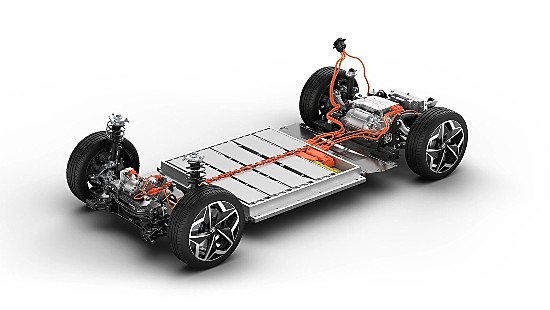Lithium remains the light metal of choice in the development of future battery storage technology. The more familiar Lithium-ion (Li-ion) battery can be found in tablets, laptops, smartphones, and electric vehicles (EVs) today. Lithium-ion batteries feature high energy density and the ability to go through thousands of discharge-recharge cycles without losing charge capacity. Fairly lightweight, lithium when used to power EVs loses its weight advantage with the need for large battery packs. Here are three EV models and the weight of their batteries:
- Tesla Model S at 545 kilograms (1,200 pounds).
- Tesla Model 3 at 482 kilograms (1,060 pounds).
- Tesla Model Y at 773 kilograms (1,700 pounds).
Why does the battery have to be so big and heavy? Because Li-ion cannot match the comparable energy density of gasoline so a battery stack is needed. Energy density is an interesting measure where internal combustion engines (ICE) burning gasoline demonstrate a distinct advantage over EV battery power. Argonne National Laboratory tests show that the average ICE burning gasoline is 100 times more energy dense than a Li-ion battery. That means for an EV to go as far as an ICE-powered car with a half litre in the tank, it requires a 45-kilogram (100-pound) battery. That’s why EV developers are seeking breakthroughs in battery technology that not only cuts down on the weight issue but also achieves the same energy density as gasoline.
A promising new development in lithium-based batteries is being worked on at the Illinois Institute of Technology, in cooperation with the University of Illinois and the Argonne National Laboratory. The result has produced a solid lithium-oxide (Li2O) battery that its inventors believe provides comparable energy density to gasoline.
The battery’s electrolyte is a solid ceramic polymer with embedded nanoparticles. Being solid there are no potential leaking issues. The chemical reaction produces lithium oxide (Li2O) during discharge. The current discharge-recharge cycle capability in laboratory testing shows no loss of capacity after 1,000 cycles.
The most significant feature of the battery is its four-electron release. Compare that to Li-ion with only one-electron discharge. That’s a 400% increase in energy output.
And unlike Li-ion which requires a liquid oxidizer, the oxygen the lithium-air battery uses is taken from the surrounding air in normal room temperatures.
With four-electron output and no need for the extra weight of an oxidizer, this new battery has weight, size, and power advantages.
Lithium-air batteries are also more environmentally friendly with the only known two drawbacks of excess heat and limited lifespan addressed in this innovative design.
The battery’s inventors claim that the design works well “in air with no deleterious effects.” The paper goes on to note that the materials used are inexpensive with an output “volumetric energy density of 1,000 Wh/L,” well “beyond what is possible from Li-ion technology.” In a press release, the inventors state that further refinements should push the number up to energy densities of 1,200 Wh/L (watt-hours per litre).
What this means for energy storage based on lithium is significant and a real game changer that will impact the design and capability of devices from smartphones and laptops to electric-powered transportation.
Are there other air-breathing batteries under development? I have run across a number in my research including batteries based on zinc and aluminum. But lithium is still the material of choice in the battery wars. But one thing is for sure, a battery that breathes air will be the likely successor to the batteries we use today.
A description of the technology appears in a recently published paper in the journal Science.

















[…] reading my recent posting on lithium-air batteries, Martin Pablo Leon O’Farrell, who lives in Argentina, wrote to ask […]
[…] Battery Technology Advancing At A Good Clip autora Len Rosen-a preveden je sa portala 21st Century Tech […]